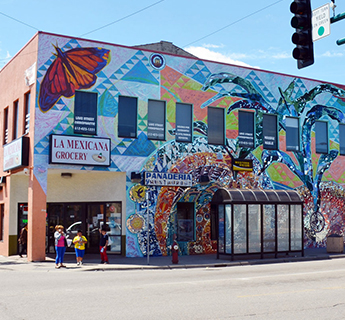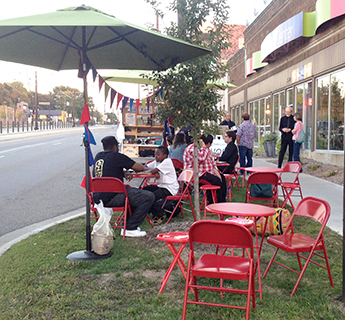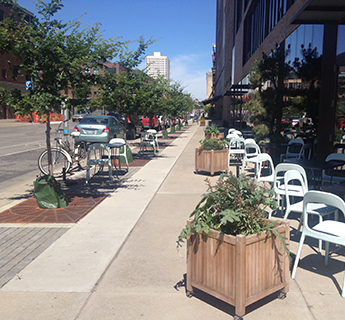Public Realm: Proactively improve the public realm to support a pedestrian friendly, high-quality and distinctive built environment.



The quality of the public realm – streets, sidewalks, plazas, green spaces, landscaping, public art, heritage streets and other publicly-accessible spaces – influences our city’s livability, sustainability, safety, transit, bikeability, walkability and health. A vibrant and high-performing public realm also contributes to the region’s competitiveness and the image of the city, attracting people to live in, work in, and visit Minneapolis.
The City of Minneapolis has multiple planning processes and guidelines for designing within the public realm such as the Downtown Public Realm Framework and Access Minneapolis. These documents inform and coordinate the work of public and private entities that shape the public realm.
Other programs target specific needs of users in the public realm, from providing safe and healthy environments to determining the aesthetic quality and sense of place in the City of Minneapolis.
 ACTION STEPS
ACTION STEPS
The City will seek to accomplish the following action steps to proactively improve the public realm to support a pedestrian friendly, high-quality and distinctive built environment.
- Develop a framework for public realm improvements citywide that guides landscaping, street furnishings, street lighting, trees, heritage streets, and other improvements to the public realm and pedestrian environment.
- Implement public realm improvements called for in the citywide framework in conjunction with transportation investments, such as street reconstructions and new transit lines according to objective and equitable criteria.
- Require developers to implement public realm improvements called for in the citywide framework in conjunction with approvals for building construction and site modification.
- Establish processes according to objective and equitable criteria for implementing public realm improvements called for in the citywide framework in areas not targeted for any transportation investments or new buildings.
- Enhance the pedestrian environment through physical interpretation of history, public art, and placemaking.
- Explore and implement new ways to improve the public realm via pilot or creative projects utilizing public and private partnerships when appropriate, while ensuring public access.
- Encourage private investment in and maintenance of public space through City programs.
- Encourage the location and design of pedestrian spaces to be climate-sensitive, allowing for shelter, window breaks, and sun access or shading depending on seasonal protection needs.
- Consider alternative funding options for public realm improvements to ensure that all areas of the city have opportunities to benefit.
- Investigate new approaches and strategies to implement pedestrian scale lighting to neighborhood interiors.
- Pilot active street furnishings that encourage spontaneous exercise.

